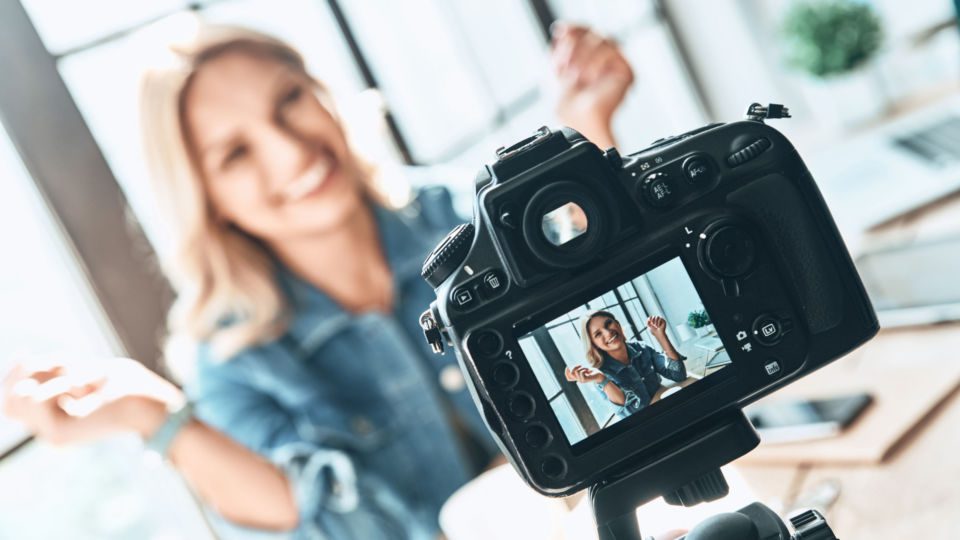 Years ago when I and my team were first putting the GRIN platform together, a lot of brands were doing influencer marketing, but it wasn’t a fully standardized marketing technique. Today, it’s totally different.
Years ago when I and my team were first putting the GRIN platform together, a lot of brands were doing influencer marketing, but it wasn’t a fully standardized marketing technique. Today, it’s totally different.
In just a few years, both brands and creators are like, “Wow, there is amazing potential here to make money and grow my brand” — whether that brand be business or personal.

Many good things have come out of influencer marketing (as we now know it). For example, a lot of creators are incredible lifestyle experts who care about their audience and only recommend exactly what they feel their audience needs. These creators are helping followers overcome problems and achieve life goals.
But unfortunately there’s also a lot of inauthenticity within influencer marketing. Both brands and influencers feel tempted to shortcut the process and make a quick buck. This makes an endorsement transactional.
The real victim here is the consumer. People follow certain influencers because they trust them, and when that influencer promotes a product that they don’t actually believe in, trust is broken. Conversely, some followers will trust those endorsements and end up spending money on the wrong brands.
What’s the Difference Between a Fake or Genuine Online Presence?
The problem with influencer marketing today is not influencer marketing — it’s inauthenticity among certain brands and online personas.
And just because an influencer promotes a brand doesn’t mean that they’ve gone over “to the dark side.” The key difference between fake and genuine online endorsements is whether that creator has a relationship with the brand (or brands) that they promote.
The best and smartest influencers today are very selective about the brands they partner with, and vice versa. This vetting process ensures authenticity in the influencer marketing space.
But because the line between what’s paid for and what’s not paid for on social media is less obvious than it used to be, there are a few things that we as consumers can do to know authenticity when we see it.
Consumer Tips for Identifying Creator Authenticity
1. Note the creator’s language when endorsing a product online.
Genuine influencer endorsements always make it clear that the creator is an avid user of the products and services that they promote. When there is brand affinity between a creator and another brand, they will often use language like “partner,” “friends,” and “team” when talking about that brand.
2. Compare organic content to sponsored posts.
At the end of the day, an influencer’s organic and sponsored content should look pretty similar. It shouldn’t be a stretch for that creator to add select products into their content production. In many cases, authentic influencers try to maintain a certain level of brand exclusivity. They view their brand partnerships as long-term relationships that ultimately benefit their audiences, and as such, they’re not going to promote every brand that offers them a paycheck.
3. Look for transparent hashtags like #ad or #sponsored.
The U.S. Federal Trade Commission does stipulate that creators disclose sponsored posts by using explicit indicators like #ad and #sponsored. These hashtags offer transparency to consumers, and it’s a good thing. If it seems like a creator is often promoting brands but never evokes the ad or sponsored disclaimer, that could be a red flag.
4. Believe brand-creator relationships over transactional content.
When a brand loves an influencer and an influencer loves a brand, they usually display that compatibility on social media in a way that endears audiences. When a creator talks about another brand in a relational way (versus a transactional one), then that is a sign that the influencer loves the products that they promote and just wants to share with their online community.
5. Compare an influencer endorsement to other online reviews.
Of course, it’s very difficult to fake influencer endorsements at scale. And when I say “at scale,” I’m referring to the fact that the greater collection of online reviews is more reliable than the word of one person. We have to take influencer endorsements with a grain of salt. Even with the influencers that I love, I always check other online reviews. Mass consensus doesn’t lie, especially if that brand has been around long enough to amass a legitimate customer base.
What Brands can do to Pinpoint the Right Influencers
1. Work with influencers directly.
A big culprit in the greater inauthenticity problem on social media are the influencer networks. Influencer networks feed this transactional approach to brand-creator relationships. In my opinion, influencer networks are a bad idea. The much more sustainable (and affordable) approach is to find influencers yourself and nurture relationships with them. By working with creators directly — reaching out on social media DMs and sending them free product to test — you can dial in your top performers and retain authenticity across your influencer program.
2. Seek audience alignment with your influencer audience.
Your influencers should act as representatives of your target audience. That means that if you build buyer personas, your creator partnerships should reflect those buyer personas. The smartest marketers I talk to always vet their influencers carefully. They’re very picky. As you scale your influencer program, you should look for ways to get pickier with your influencer recruitment. That’s often the key to maintaining authenticity and increasing ROI over time.
3. Make sure that influencers genuinely love your products.
If an influencer hasn’t tried your products and can’t say that they love them, then you should probably move on. Either your brand isn’t a good fit, or you might need to improve the quality of your product. Either way, your best influencer partnerships will be with those creators that freely champion your brand and would probably talk about you whether or not you paid them to do so.
4. Nurture long-term relationships with your authentic influencers.
I totally understand using one-off influencer campaigns to test different ideas and influencers. But when you find that great creator fit, never let it go. Do what you have to do to maintain that relationship. Genuine brand-influencer partnerships don’t come along every day — it’s almost like a happy marriage. Keep those creators close and try to replicate those relationships to grow your program. When you take this approach seriously, the returns are there, and your consumers will love you for it.
Brandon Brown is the CEO and Co-founder of GRIN, a leading software for influencer marketing. Prior to GRIN Brown led marketing for Red Bull in Los Angeles. He is an expert in driving brand outcome through artists, musicians, athletes and tastemakers. He resides in northern California and can often be found supporting local small businesses or listening to his favorite podcasts.




